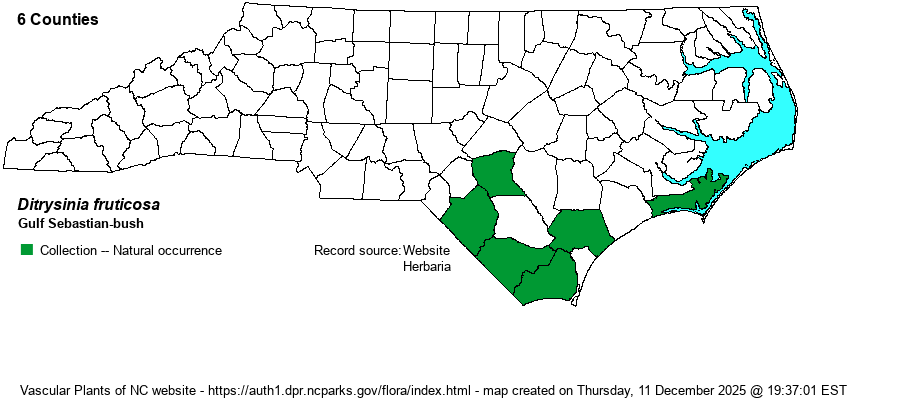| Author | (Bartram) Govaerts & Frodin | |
| Distribution | Found only in the southern Coastal Plain, and within that range essentially limited to the floodplains and banks of several blackwater rivers. Recorded north to Cumberland and Pender counties, but not recorded recently from those counties. A specimen from Carteret County (NCU) is correctly identified, though it might be of questionable provenance that far to the northeast.
This is a Southern species found north only to southeastern NC and southern AR, and south to northern FL and the Gulf Coast to eastern TX.
| |
| Abundance | Rare within the overall range in the state, but it can be common along the Lumber River downstream of Lumberton; scarce along any other river. It is a Significantly Rare species. | |
| Habitat | This species has a narrow and selective range in the state, limited to riverbank forests and natural levees along blackwater rivers. It is infrequent farther back from a river in true swamp forest (i.e., cypress-gum stands), as it prefers slightly raised soil on levees or natural islands within the floodplain, such as under Laurel Oak (Quercus laurifolia) and other hardwood species. | |
| Phenology | Blooms in May and June; fruits from July to October. | |
| Identification | This is a medium-sized, tardily deciduous (leaves green into early winter) shrub growing to 8-10 feet tall on average. It has alternate, lanceolate to narrowly elliptic leaves, which taper to a somewhat acuminate tip; they are shiny and dark green above, with entire margins. The sap of a broken twig or leaf petiole is milky, easily separating this poorly known shrub from most any other woody plant. It has an unusual inflorescence, being an erect, narrow spike of small, greenish-yellow flowers to about 2 inches long, with male flowers in a spike on the upper branches and female spikes on lower branches. Because the species is so scarce in the state, and is hardly found now away from the banks of the Lumber River, few people run into it and would be confused by it, at least away from the river -- easily passing it over as a blueberry or some other shrub. This shrub would be hard to identify from a canoe, at least without close inspection and breaking a twig; however, when walking along the banks of the river one can see it is actually a common shrub in some areas. | |
| Taxonomic Comments | Until recently it was named as Sebastiania ligustrina. It has also been named as Sebastiania fruticosa in former years.
| |
| Other Common Name(s) | It has usually been called simply Sebastian-bush; however, most recent references give Gulf Sebastian-bush as the common name, despite there being no other species in the genus. Obviously, calling it “Sebastian-bush” in NC is suitable. | |
| State Rank | S2 | |
| Global Rank | G5 | |
| State Status | SR-P | |
| US Status | | |
| USACE-agcp | FAC link |
| USACE-emp | FACW link |

